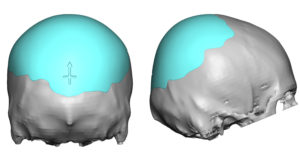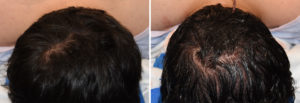Background: Augmenting skull or head shape deficiencies used to be fairly impractical. The traditional method of cranioplasty surgery involved long scalp incisions and the tedious application of bone cements to add shape to the head. Besides the scar there was a very high rate of contour irregularities and a lack of adequate augmentation effect. This is not a particularly appealing option for many patients whose interest is in aesthetic skull reshaping where one must be careful to not tradeoff one problem for another. (large scar, contour irregularities)
Custom skull implants made from 3D CT scans have changed the entire approach to all forms of aesthetic skull augmentation. Like the use of any other preformed implant used in the face and body, small incisions are used through which a malleable implant with a predetermined size and shape is inserted. The skull is no different in this regard, it just has lacked a method to create the desired implant.
The back of the head is one of the most common skull augmentation procedures. Whether it has an overall flatness, asymmetry or a lack adequate projection and shape, custom occipital skull implants are requested equally between men and women.
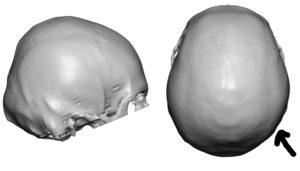
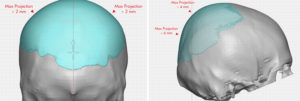
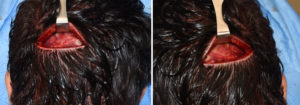

There is no doubt that the best method to reshape the back of the head, even in more modest shape deformities, is with a custom skull implant technique. Beyond the shorter incision needed to place it, getting a smooth and even contour would be next to impossible wit bone cements in a reliable fashion.
Highlights:
1) A custom skull implant is commonly done for the back of the head.
2) A smoother and more symmetric back of the head is always a common goal regardless of implant size.
3) Thinner skull implants are easier to insert but great care must be taken to ensure their thin edges are fully unrolled.
Dr. Barry Eppley
Indianapolis, Indiana



